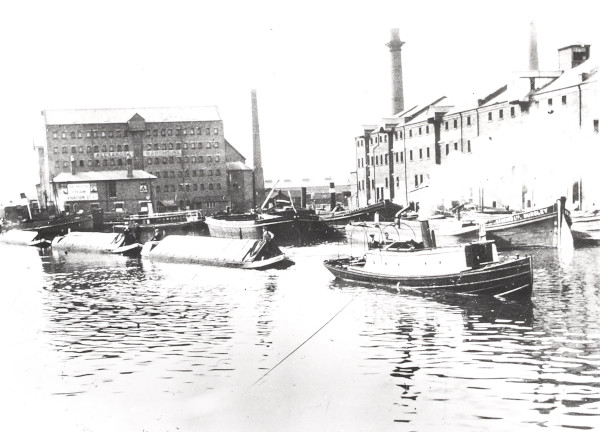Worcester
Delivering the goods
Built in 1912 by Isaac J. Abdella & Mitchell of Brinscombe on the Thames and Severn Canal, WORCESTER was one of five motor tugs built between 1908 and 1912 for the Sharpness New Docks Company to tow barges through canal tunnels. She was constructed of iron throughout and has remained virtually unaltered except for an engine change in 1929.
WORCESTER’S story vividly illustrates the role and fate of such small, powerful and versatile vessels during the First World War. At the beginning of the war a number of the tug’s crew, including her engineer, joined the army to man barges operating on canals in France. By the beginning of 1916, the Company became increasingly concerned about the decreasing number of boats being towed through the canal tunnels; the 421 towed in September 1915 had reduced to 307 in September 1916, by which time the number of boats towed barely paid the wages of the tug crews. They thus looked at ways to reduce costs and economise.
On 2 August 1916 the owners of WORCESTER and her sister tug BIRMINGHAM received a letter from the Admiralty regarding tugs wanted by one of the Allied Powers. The owners offered both tugs for sale at £1,500 each, but on 16 August the chairman reported that the Admiralty rejected the offers to buy the tugs, considering them too expensive.
Six months later, in February 1917, an Order of the Board of Trade put the entire British canal system under government control and a Canal Consultative Committee was set up. One of its first acts was to give notice that no plant or machinery could be sold without its permission; in April 1917 it issued a letter stating that ‘no tugs should be disposed of’. As the company was anxious to reduce its costs it immediately started negotiations for the sale of BIRMINGHAM. On 2 May 1917 it was falsely reported that she had been sold to the War Office, but on 4 July it was announced that a settlement had been reached with the Borough of St Marylebone for her purchase for £925 plus an additional payment of £30 11s 5d for delivery and the services of a driver in London.
Further attempts were then made to sell WORCESTER through an agent. On 20 June 1917 the engineer reported that negotiations for the sale had been delayed owing to a defect in one of the cylinders, which had to be repaired before a trial run could be arranged. By 4 July the repair had been carried out and the tug was put under offer to Messrs Perman & Co. for the sum of £1,000, who were arranging for an early inspection by one of their clients. Two week later the engineer reported that he had met an inspecting officer at Tardebigge, and that a very satisfactory trial had been run. However, the officer was not authorised to discuss terms of purchase.
A month later, in August 1917, a letter was received from Messrs Perman & Co. stating that their client, the Admiralty, again refused the purchase of WORCESTER, as the price was in excess of what they expected to pay for such a craft. Discussion followed but the owners refused to budge on the price of £1,000. By September 1917 nothing further had been heard from the Admiralty.
The Canal Consultative Committee recognised that the tug was doing useful work on the Gloucester section, and felt that it would be as well to keep her there. This was then approved by the Board of Trade and she continued in this role for the rest of the war.

Black and white photograph taken from beside the canal, shows the tug 'Worcester' leading a train of narrowboats through the basin at Gloucester Docks. Canal & River Trust archive, BW192/3/2/2/11/8
Where is she now
WORCESTER remained in work until 1956, mainly as a tunnel tug on the Worcester and Birmingham Canal. She is now conserved in operating condition at The National Waterways Museum, Ellesmere Port.
Sources
WORCESTER files at the National Waterways Museum, Ellesmere Port.
Brouwer, Norman J. (1993) International Register of Historic Ships.
